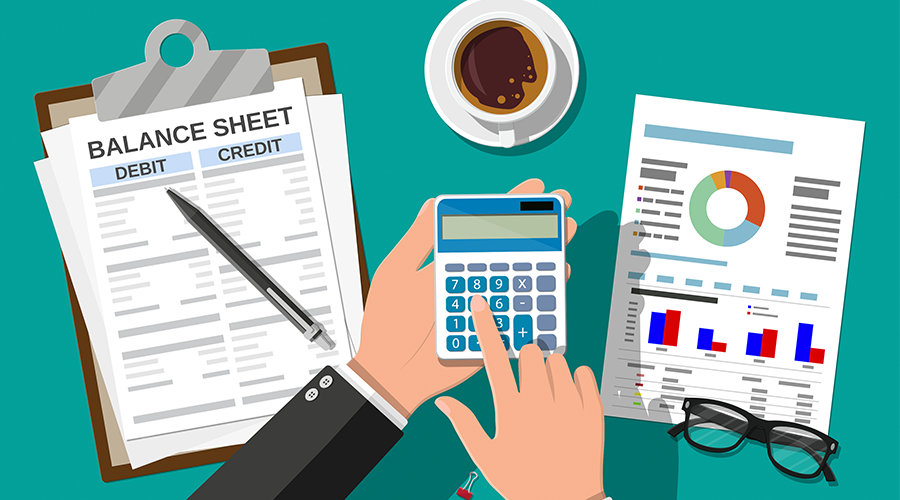As the adage goes, it takes money to make money. And when you run a business, it often takes somebody else’s money—whether your goal is as grand as acquiring a pharmacy or as mundane as upgrading your equipment.
But the idea of borrowing money can overwhelm even the best pharmacy owners or potential owners. How much can you afford to borrow? How can you qualify for the amount you need? What rate should you be looking for? Is it worth the financial risk?
Pharmacy loan guru Bo Garmon, loan officer at First Financial Bank, is here to help. First Financial Bank’s lending team has over 75 years of pharmacy experience and includes current and past pharmacy owners—and it has originated almost $200 million in pharmacy loans over the last few years.
“Oftentimes, people see the potential to buy a pharmacy as unattainable because of the daunting purchase price of pharmacy,” Garmon said. “However, qualifying for a loan, particularly to acquire a pharmacy, is not as difficult as it may seem.”
How to get a loan
You might take out a loan for several purposes—to acquire a pharmacy, start a new pharmacy, invest in new opportunities, remodel your store, and so on. No matter the purpose, the process for the loans will look similar, Garmon said.
Most independent pharmacies require a Small Business Administration (SBA) loan rather than a conventional loan. For various reasons, acquiring a conventional loan is more difficult. But SBA loans work better for both the pharmacy and the lender. For the lender, SBA loans offer a guarantee on part of the loan, which doesn’t come with a conventional loan. For pharmacies, SBA loans require significantly less for a down payment, usually 10 percent instead of 25 percent.
Qualifying for an SBA loan involves a variety of criteria, and every lender uses its own approach.
Garmon said lenders typically look at three factors:
- Cash flow
- Value of the business, including all the collateral
- Financial strength of the individual guaranteeing the loan
“The bank will want to ensure the acquisition is not only good for the buyer, but good for the bank as well,” Garmon said. “The strongest factor the bank will consider will be the cash flow of the business. If the borrower has a good credit history and the business shows enough cash flow to make the loan payments and pay the owner, chances are you can qualify for a loan.”
With your pharmacy’s financial information, the lender will evaluate your cash flow ability to service the required debt payments. The lender will typically employ a formula using Earnings Before Interest, Tax, Depreciation, and Amortization (EBITDA) to perform the cash flow analysis. Other considerations often include gross profit margin, price per script, and total expense ratios.
All those numbers, of course, are decided by your business practices long before you ever apply for the loan. Which means the better you run your business, the better your chance of qualifying for a loan.
Because your financials determine the strength of your application, your accounting practices matter. “The main thing the pharmacy owner will want to do is make sure their books are in good order,” Garmon said.
“The bank will want to ensure the acquisition is not only good for the buyer, but good for the bank as well.”
Garmon often encounters pharmacies that reduce their net income during their accounting process to help reduce their tax liability. For a loan qualification, that’s not a good idea. “That can be beneficial for them in the short term, but it can also be a detriment if they decide to sell the business or apply for a loan,” Garmon said. “While that business might be viable, banks have to rely on income and tax returns when underwriting that business.”
If you’re looking to launch your first pharmacy, your application will look different. Without historical financial data, you’ll need to find other ways to demonstrate your viability. First Financial Bank, for example, requires the loan applicant to inject $50,000 into the business. In addition, it requires a detailed business plan with projected earnings.
Where to get your loan
When it comes to choosing a lender, Garmon said rates aren’t the only factor to consider. “The most important thing is to choose a lender or bank that you’re comfortable dealing with. Find a lender that understands your business and can be a partner for you in the future as you grow and have additional needs.”
More specifically, choose a lender that specializes in independent pharmacy. “Banks that don’t specialize in pharmacy lending often don’t understand the nuances of this business,” Garmon said. “They don’t understand things such as reimbursements, rebates, wholesaler contracts, and most importantly, the need for working capital.”
If you’re pursuing an SBA loan, a preferred SBA lender will expedite the loan process. Preferred lender status allows banks to issue their own approvals instead of having to wait for SBA approval.
Decisive Documents
Lenders will pore over your financial records and other business documents before agreeing to lend to you. Make sure these documents are in good order before going to the bank.
- Last three years’ tax returns on the business
- Most recent income statement and balance sheet on the business
- Last three years’ personal tax returns
- Personal financial statement
- Credit report (ordered by the bank once application is received)
Terms to Know
Don’t get lost in lender jargon. Here are the most important terms to know.
Tangible collateral
These assets are physical and measurable, such as cash, accounts receivable, inventory, property, and equipment.
Intangible collateral
These assets aren’t physical or quantifiable. They include the pharmacy’s brand name, customer base (or goodwill), and any patents or proprietary technology.
EBITDA
This formula calculates net income after all interest, taxes, depreciation, and amortization have been accounted for. This formula is the most widely used method when determining the value of a pharmacy and the cash flow ability of the business.
Working capital
Working capital is essential for independent pharmacies. Working capital refers to cash on hand to manage day-to-day operations and inventory purchases.
From the Magazine
This article was published in our quarterly print magazine, which covers relevant topics in greater depth featuring leading experts in the industry. Subscribe to receive the quarterly print issue in your mailbox. All registered independent pharmacies in the U.S. are eligible to receive a free subscription.
Read more articles from the December issue:
- The complete guide to CBD, the new profitable plant product sweeping the nation
- How to protect your patients from online pharmacy scams
- One simple solution to making more money from your front-end
- The latest independent pharmacy trends from 2018 NCPA Digest
- How to boost front-end revenue by engaging all five senses
- How one independent pharmacy thrives through nonprofit partnerships
- New USP guidelines on water purity for reconstitution
A Member-Owned Company Serving Independent Pharmacies
PBA Health is dedicated to helping independent pharmacies reach their full potential on the buy-side of their business. Founded and owned by pharmacists, PBA Health serves independent pharmacies with group purchasing services, wholesaler contract negotiations, proprietary purchasing tools, and more.
An HDA member, PBA Health operates its own NABP-accredited secondary wholesaler with more than 6,000 SKUs, including brands, generics, narcotics CII-CV, cold-storage products, and over-the-counter (OTC) products — offering the lowest prices in the secondary market.












